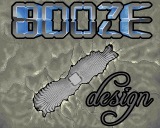



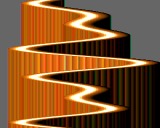
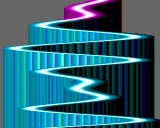

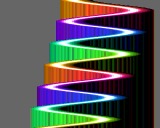

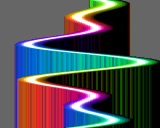

comment by dodge on 09 February 2018
Dat bloody Sierpinski Zoom ... Is there a writeup on how it was done?
comment by rloaderro on 11 February 2018
I'm curious about how kefrens bars (or alcatraz bars if you want ) are really done. I think I heard the explanation below one time, but I never tried it.
It is based on having a 1 pixel high framebuffer repeated using modulo and gradually changing it a little bit per scanline using cpu. The cpu would be racing a little bit ahead of the monitor beam all the time. That explains the vertical copying effect. The number of changes per line mustn't be too much otherwise the monitor beam would overtake the area the cpu is changing.
Is that what everyone is doing or is there another way? A 96 era amiga coder would perhaps draw it on a textured polygon and put it through c2p and voila 2fps.
comment by LaBodilsen on 16 February 2018
@rloaderro
That is exactly how the effect is made.
The screen is 1 pixel high, stretched with modulo, and for every raster line you blot in a new "rasterbar". no double buffer.
i discovered this effect by mistake in my early days of coding, as i thought i could just plot all the vertical rasterbars i needed, and it would be perfect. but as my double buffer was broken, it looked like the well known kef/alcatraz-bars.
Regarding the demo:
Great first release, and really nice to see jackasser on the amiga. hopefully we will see more from booze in the future.
comment by rloaderro on 22 February 2018
@LaBodilsen Thanks for confirming :) I noticed the Lord Helmet scroller in Nexus 7 has similar previous line replication. But might not be the same effect as that one looks as if it would be changing a lot on every scanline. There might not be enough time to do it.
Please log in to add a comment!
User Votes: Average: 4 points (1 votes) |
Please log in to vote on this production!
|